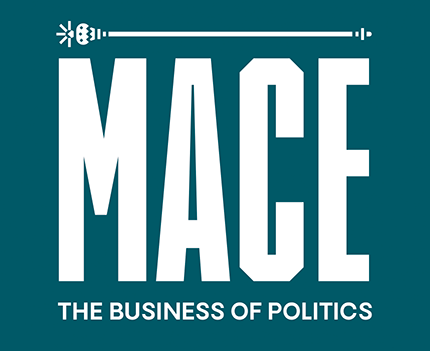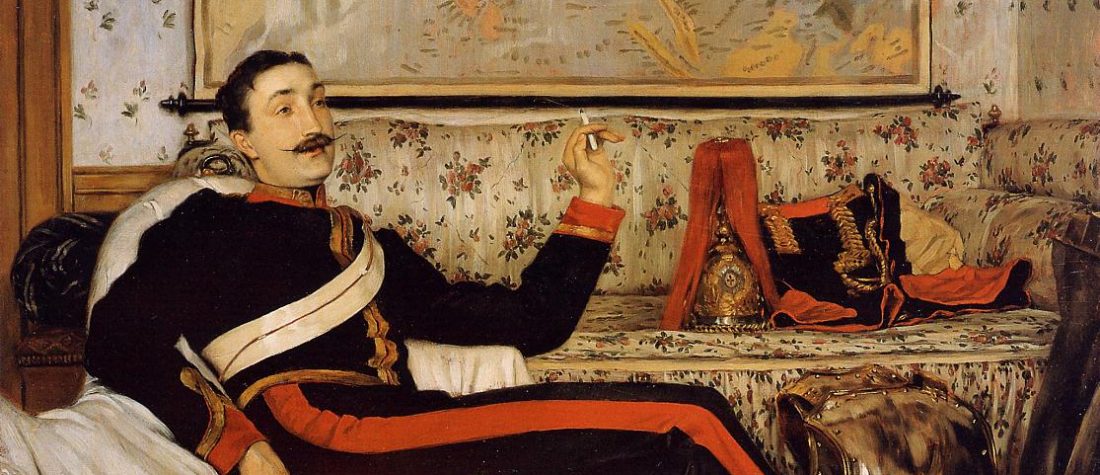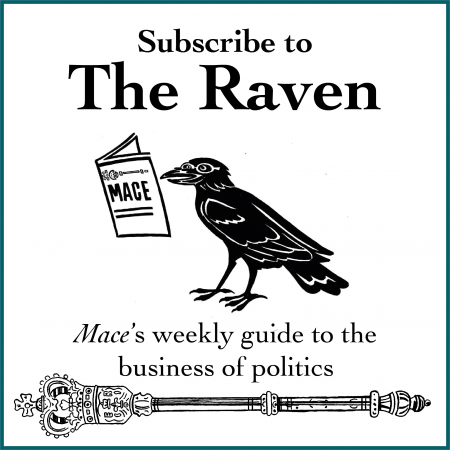Philip Mould, art dealer: What’s so interesting about that Rees-Mogg pose is that, unlike 99 percent of the canon of British portraiture, he’s reclining. The political office of the 16th, 17th and first half of the 18th centuries was indistinctive from the aristocratic one. Even Cromwell would stand like a Van Dyck when he was being painted. The idiom of portraying political power was always to make you look like an aristocrat.
Then, in the later 18th and 19th centuries, politicians were increasingly portrayed with a new democratic quality: you think of Thomas Lawrence and Millais doing Disraeli and Gladstone – they’re intransigent, statutory. There’s a new sobriet, with darker clothes that make it hard for artists to deal with. Artists then had to emphasise gesture and facial expression in a way that they hadn’t in the ostentatious iconography of yesteryear.
And although it breached protocol, if you’re a portrait painter who wants to express the role of Leader of the House, what better way to style him than as reclining over a number of benches? Rees-Mogg is a sophisticated chap who knows his art and history; what I find so amusing is that a portrait painter would likely have depicted him in a similar way.
Prime ministers are more problematic to depict. When it came to someone like Thatcher, that was a real task because there had never been a language for female power in the artistic tradition. So artists were confused; Antony Dufort famously decided to include her handbag in his statue, which in the classical statuary tradition has no heritage. What unites all prime-ministerial representations is a certain amount of smouldering dominance: Tony Blair by Jonathan Yeo epitomises that. There’s a Shakespearean look of introspection about him, which reminds me of that Enoch Powell quote, “All political careers end in failure.” Boris Johnson is quite interesting because you’d slightly want to fill the canvas with his head; he’s the political equivalent of Seumas Heaney. That’d be the only appropriate way of portraying him.
Ultimately, whether serendipitously or not, Rees-Mogg expressed himself in a way that highly successfully resembles the Leader of the House in the artistic form. It’s fractionally subversive; only he can get away with it. The whole process of portraying fugitive political power is one I’ve made a study of. Increasingly, the artist is somewhat limited in their ability to express office and hierarchy, as style has changed and modernised. But gesticulation like Rees-Mogg’s really achieves that.
Griselda Pollock, art historian: I am sure there are many people to write about his adoption of the pose of Goethe reclining by Tischbein, although I would not want to address it myself. I think men like that think they own the world – and everything in their background makes them feel at home in it. At least Goethe looks pensive and aware of history…
Toby Young, journalist [replying to Pollock]: I don’t believe cishet white males feel “entitled” to behave in particular ways. On the contrary, their membership of those now reviled categories is more likely to inhibit them. Rees-Mogg was signalling his contempt for the Remainers trying to block Brexit, many of whom are themselves cis-het white males, so trying to frame it in those identitarian terms doesn’t make much sense.
Rees-Mogg shouldn’t have apologised for it. Signalling your contempt for the House of Commons or House of Lords by slouching is a fine and ancient tradition in the Palace of Westminster.
Twitter has had a net negative effect on politics. MPs pay it far too much attention because they mistakenly think of it as a kind of focus group that’s representative of Britain. In fact, Twitter users are more urban, young and left-wing than the rest of the country.
Plaid Cymru spokesperson: That now infamous image says it all, really. It has become a symbol of certain politicians who have pursued a probably disastrous Brexit with little thought for its implications on the lives of people across these nations. Any version of Brexit would be bad for Wales, but the truth is that Messrs Johnson, Rees-Mogg et al know little and care less for our nation.
But in a wider sense, that image is also a symbol of what the entire Westminster establishment had come to represent. It was broken. It was paralysed.
Mark Stephens, lawyer: Parliament has allowed photography and cinematography for a long time, so this is nothing new. Nowadays, part of the cut and thrust of politics is greater public scrutiny and part of that is to have images shared from the chamber, whatever is going on. It’s become an important part of our democracy to be able to see what MPs do when they’re in Parliament, whether that’s playing Candy Crush on their phone, making a speech or reclining across the benches.


